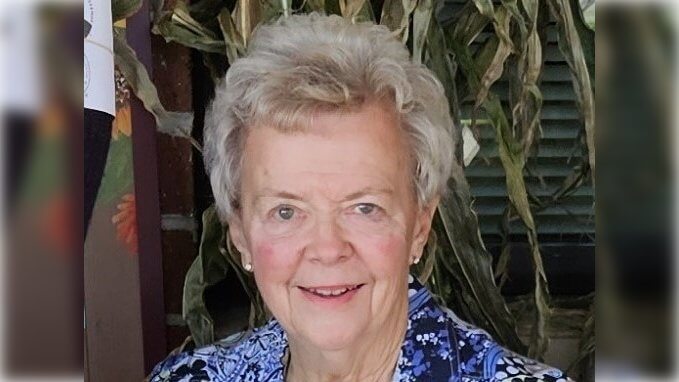


Home » Penny Duffee | Morgenwald Standard Schnauzers

Penny Duffee
1. I live in Bloomington, Indiana, and got my first Standard Schnauzer (SS) in 1971—wanted a companion—breeder said, “Try showing.” Won my first point, the rest is history! Bred our first litter in the mid-70s under the Morgenwald name. I did not appreciate the quality of my first dogs until many years later. I handled three of our bitches and one dog to all-breed BIS… plus bred/owned two additional BIS winners professionally handled. We have had three National Specialty winners (two owner-handled) and several additional No. 1 SS of the Year.
In the past, I handled dogs for friends—finished at least one champion in each Group and had several in the Top 10. This experience with other breeds helped me develop a better eye for SS and an appreciation for the importance of structure and movement.
2. There have been a limited number of Morgenwald litters over the years. We only breed when we want something for ourselves to show and breed—never had a litter just to have puppies to sell. The selection of a puppy begins long before those puppies arrive. Litters are planned two generations in advance. Knowledge of the pedigrees in depth is critical—both vertical and horizontal. You are not breeding two individual dogs, you are breeding the entire families. No dog is perfect, so you must learn how to objectively evaluate your own dogs and their prospective breeding partners. Knowledge of genetics is also critical to understand which traits, both good and bad, will come through in the prospective breeding.
Health testing is a priority and will vary from breed to breed. Fortunately, SS are a very healthy breed but we must test to keep that status. SSCA just completed another health survey and the results are still being evaluated, but there is no initial indication of major changes.
A CHIC number should be the minimum level of evaluation. For our breed, that includes the required hips, eyes, and DCM, plus the recommended thyroid, basic cardiac evaluation, and DNA Repository.
Puppies are evaluated from the moment they are born, looking for strong, vigorous babies. We watch the interaction of littermates as they grow. We introduce early stimulation and expose puppies to a variety of sounds and sensory input. As they grow they have lots of things to climb over/under—and fall off, too! This helps to develop confidence and coordination. At seven weeks we ask someone unfamiliar with the puppies to do the formal temperament testing. These results are not viewed as good/bad but as an indication of the basic temperament, to help select the appropriate home for each puppy.
At six weeks we do a conformation evaluation. We have a long checklist of traits which is checked for each puppy. We take pictures of stacked puppies—side, front, and rear views. Working with the puppies from the time they are on their feet helps make this process much easier—but still a challenge! Looking at the puppies in pictures (or in a mirror, per Pat Hastings) helps us look at them more objectively.
“Back in the day” we used to say that the puppies that were not show quality were the Obedience prospects. Today, we do so many more performance activities with our dogs—many of which are physically demanding. Correct structure is as critical for these dogs as the show/breeding prospects.
Not all puppies are show prospects. Each must be critically evaluated, based on structure and on temperament/personality, then placed in the appropriate home. SS puppies are a challenge—and not all first-time dog owners are equipped to handle the smart, determined, and charming little critters! Those big, dark brown eyes and silly antics can turn into a real handful! If you aren’t the “boss,” then they will be.
3. Overall, the breed is doing okay. Coats are typically better than a few years ago, especially in the black dogs. We are seeing fewer squirrel tails, indicative of poor rear structure. Temperaments are generally good. Forearms still tend to be shorter than desired but improving.
One concern is movement. A working dog should cover ground with minimum effort and no wasted effort. The front should extend out to the nose and the rear extend an equal distance. The feet should just clear the ground; “high stepping” is a waste of energy. Watching the dog coming and going should show a “V” with feet converging toward a centerline as the speed increases. In the front there should be a straight line from the shoulder to the foot; in the rear that line should be straight from the hip through the hock to the foot. People should go back to study the works of Rachael Paige Elliott—her works and diagrams are an excellent source of information about correct movement.
Size continues to be a concern. In the US, we tend to think that “bigger is better.” SS are a measurable breed—and the middle Schnauzer—with a DQ both high and low to remain in the middle. The maximum height for males is 20 inches and for females it’s 19 inches. We should encourage judges to take the time to measure. Recently, the term “robust” in our Breed Standard also seems to be taking on the concept of bigger is better, resulting in the selection of heavy, coarse, or barrel-chested dogs. SS need to be substantial enough to work all day on the farm, but too much bulk takes away from that agile dog with great endurance.
4. Over the years the sport has changed a lot. Professional Handlers are playing a bigger role, although the NOHS has offered another avenue for the Owner-Handler. Unfortunately, those wins are not always viewed as the same level of accomplishment as the “real” Groups.
Today, judges come from a different background than “back in the day.” Many of the old-timers had a rural background where animals were an important part of everyday life. They understood the relationship between correct structure and the ability to function… their livelihood depended on it. Today’s judges do not have that advantage and often find that a challenge.
The number of shows has increased over the years. In some areas of the country there seems to be an excess, but in less populated areas that has been beneficial.
5. The Internet is a major part of everyone’s life and a source of information—both accurate and inaccurate. We used to look forward to making those phone calls about the big win, but now someone has already spoiled the surprise by posting on Facebook before we are even out of the ring.
6. We are not drawing in younger people… and the rest of us are not getting younger! It seems the world today wants instant gratification. Becoming knowledgeable and proficient in the dog world does not come quickly or easily. It requires the investment of many long hours—and years—along with a lot of “blood, sweat, and tears!” It is much easier to turn to the professionals who have already made that investment in the sport.
Becoming knowledgeable and proficient in the dog world does not come quickly or easily. It requires the investment of many long hours—and years—along with a lot of “blood, sweat, and tears!”
7. One thing that hasn’t changed—dog friends are the BEST friends! We may be competitive in the ring, but out of the ring we have each other’s back. I am grateful for all the great times and friends over the years.